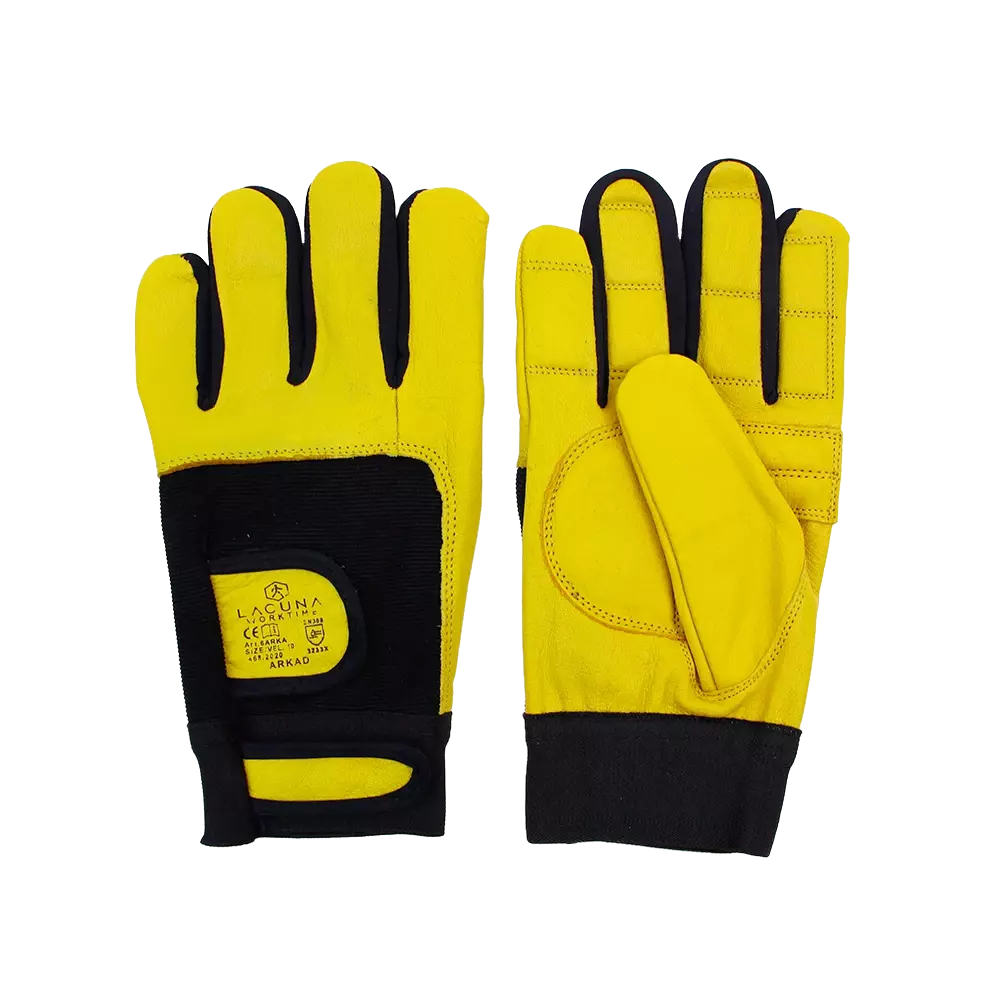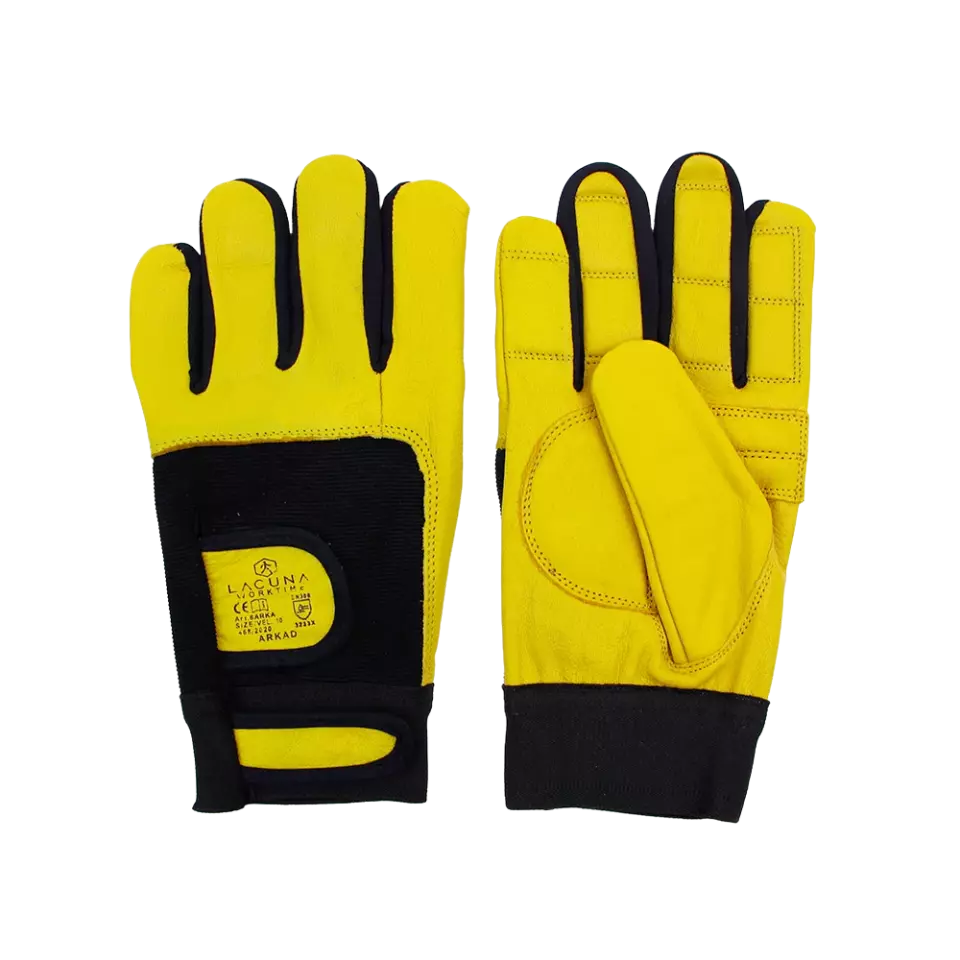
Features You'll Love

Glove Features · Reinforced Palm
Enjoy enhanced durability and protection where you need it most, extending glove life and improving grip.

EN 388 · Abrasion Resistance Level 3, Tear Resistance Level 3, Puncture Resistance Level 3
Provides good resistance against scraping, scratching, and rubbing on rough or abrasive surfaces.
Offers strong resistance against ripping, making the material durable against snags and tears.
Withstands strong pressure from sharp objects like nails or thick splinters.
Lacuna
ARKAD Antivibration glove, 12 pairs
ARKAD Antivibration glove, 12 pairs
4.8 / 5
103,15 €
Price per 12 pairs
8,60 € / pair
Choose size
Free delivery
Features You'll Love

Glove Features · Reinforced Palm
Enjoy enhanced durability and protection where you need it most, extending glove life and improving grip.

EN 388 · Abrasion Resistance Level 3, Tear Resistance Level 3, Puncture Resistance Level 3
Provides good resistance against scraping, scratching, and rubbing on rough or abrasive surfaces.
Offers strong resistance against ripping, making the material durable against snags and tears.
Withstands strong pressure from sharp objects like nails or thick splinters.
Product description
Description: Antivibration leather glove with reinforcement on the palm. Ideal for mechanical work. Extra pads on the palm protect your hands from vibration and are ideal
to work with vibrating machines. The cuff is elastic and gives extra comfort when people wearing, extremely good grip due to
shapes which follow anatomy of the hand
Marterial: High Quality cow leather, cotton lining, cotton back of cow leather
Cuff: Elastic, velcro closure
Standards: EN 420, EN 388: 3233X
Size: 10 – 11
Packaging: 12/72 pairs
Old product code: 2553A, 2553AWT
Barcode: 3858891450247
Unite of measure: pair
Packaging/minimum order quantity: 12
Full box quantity: 72